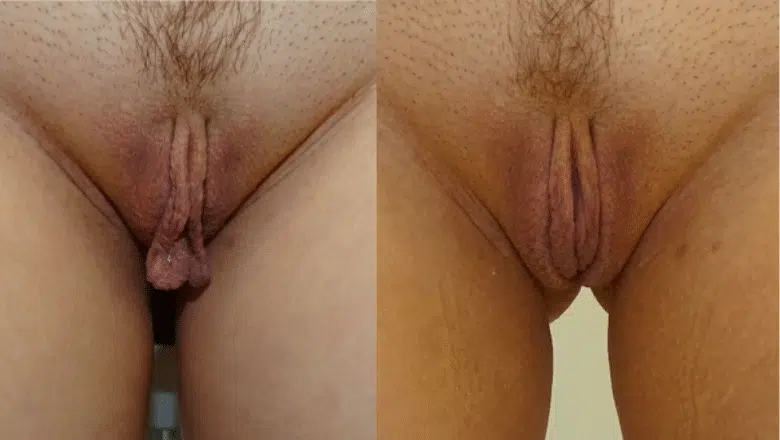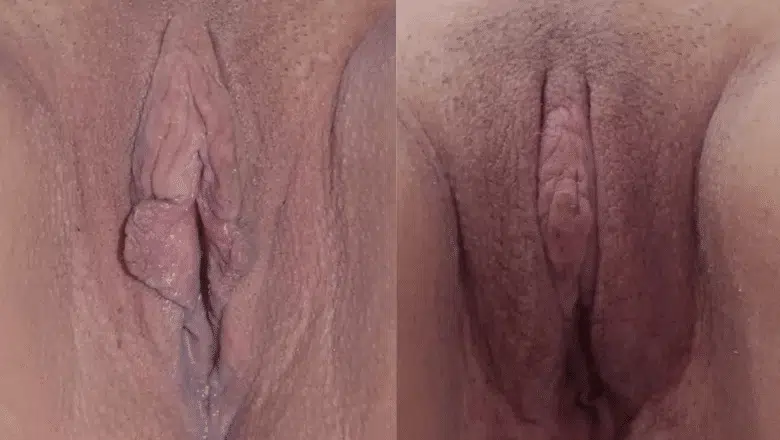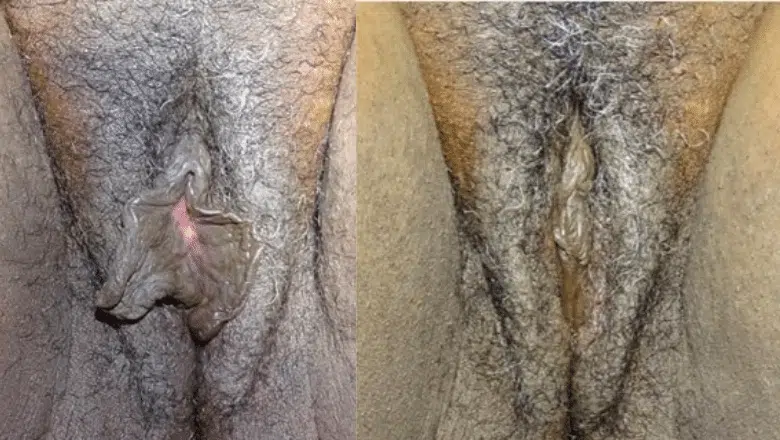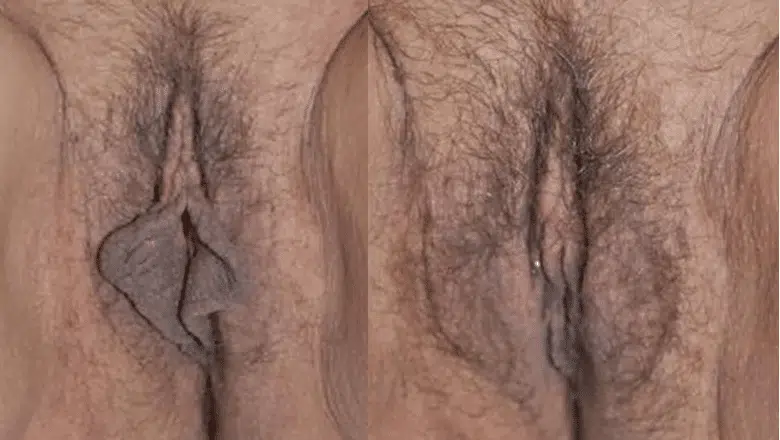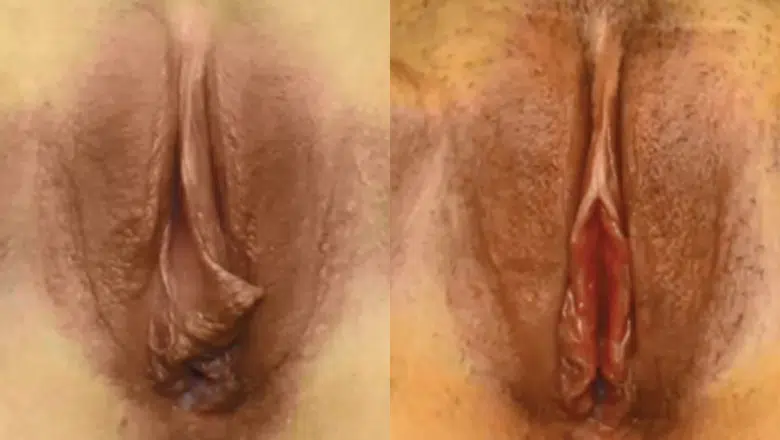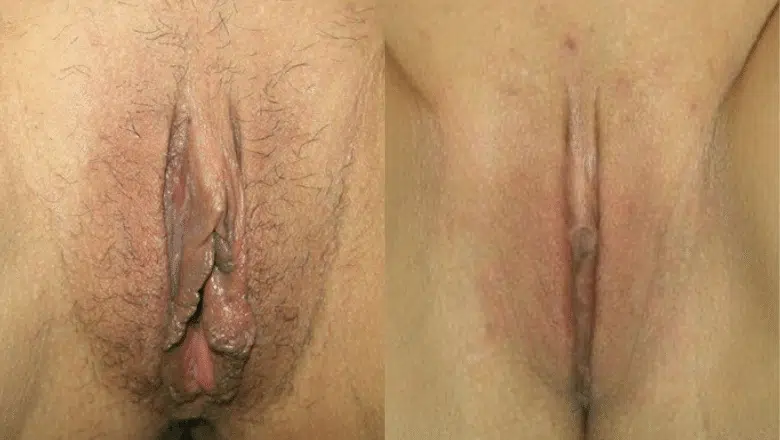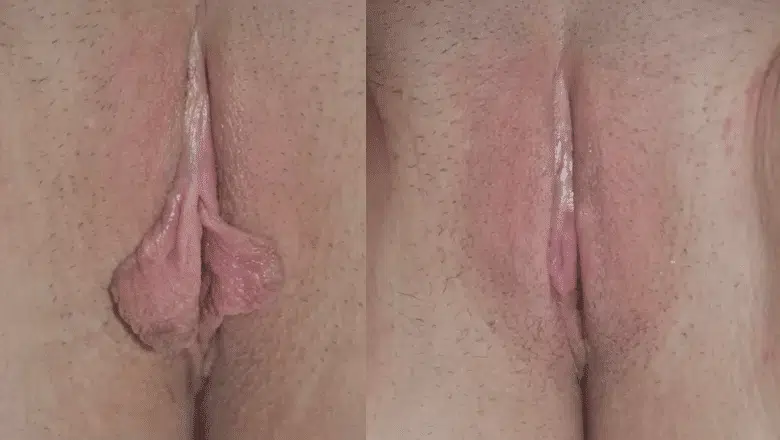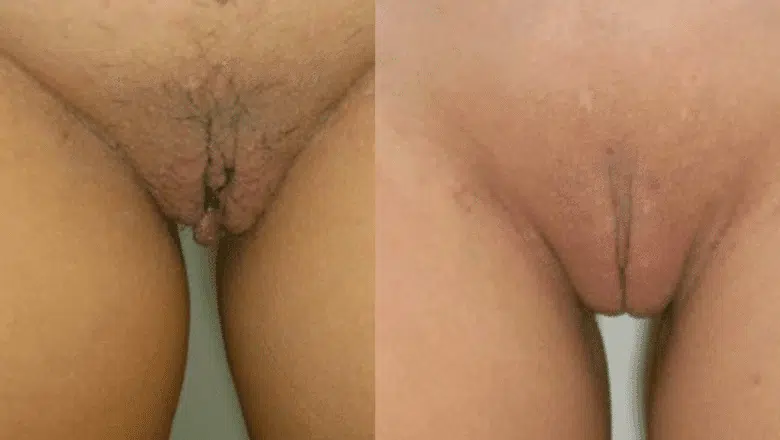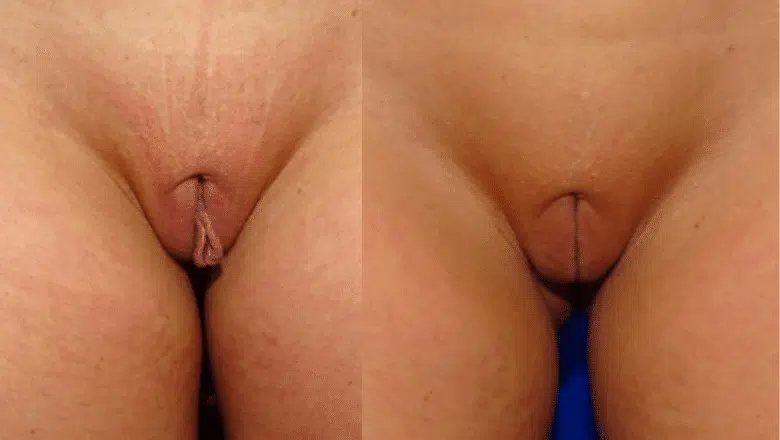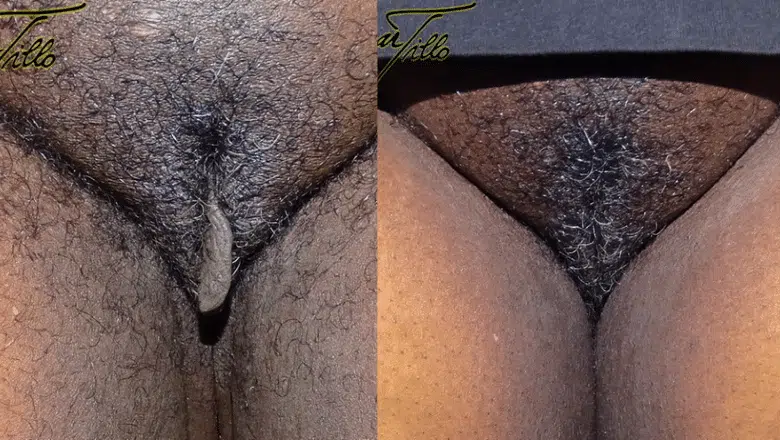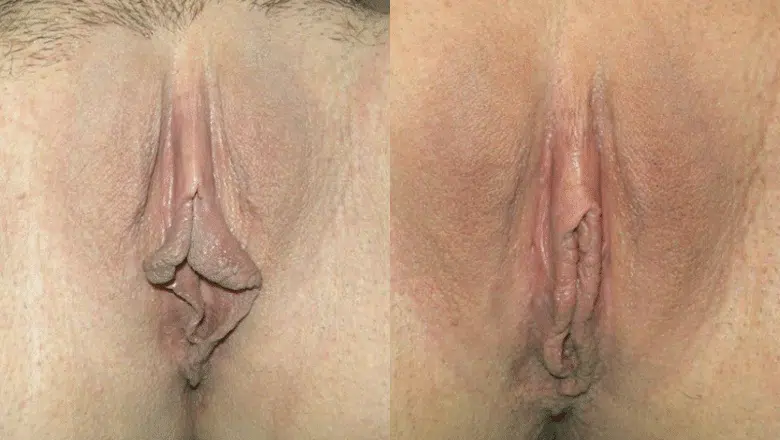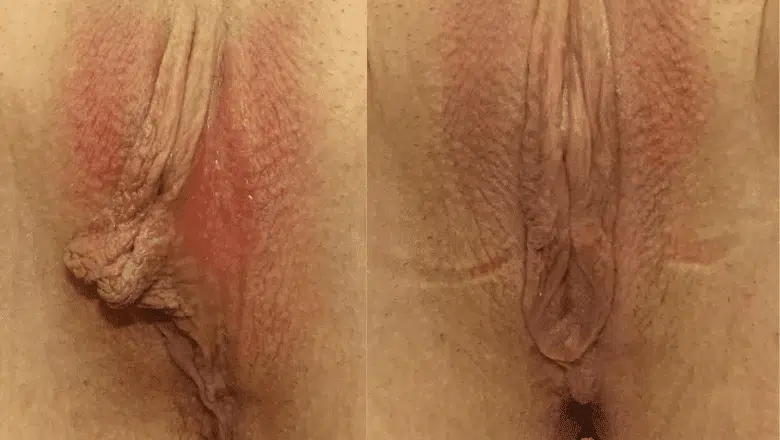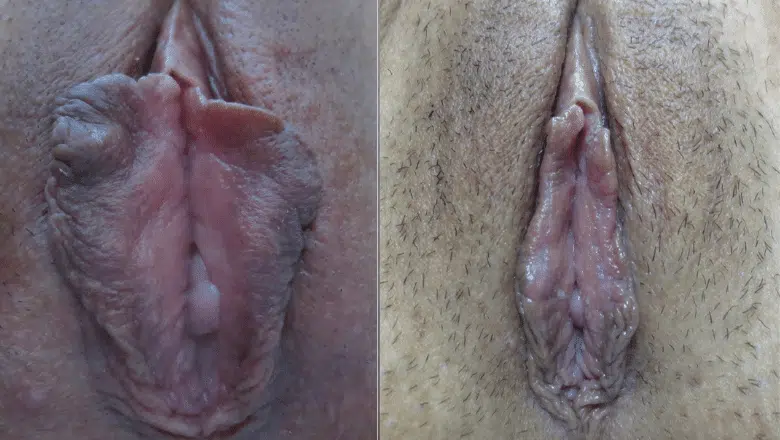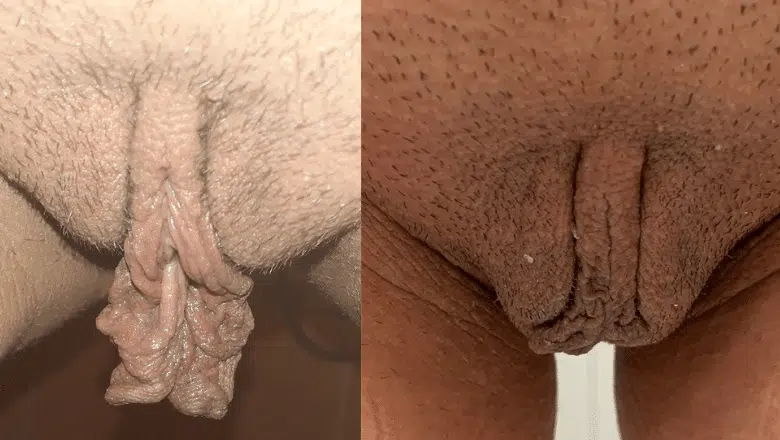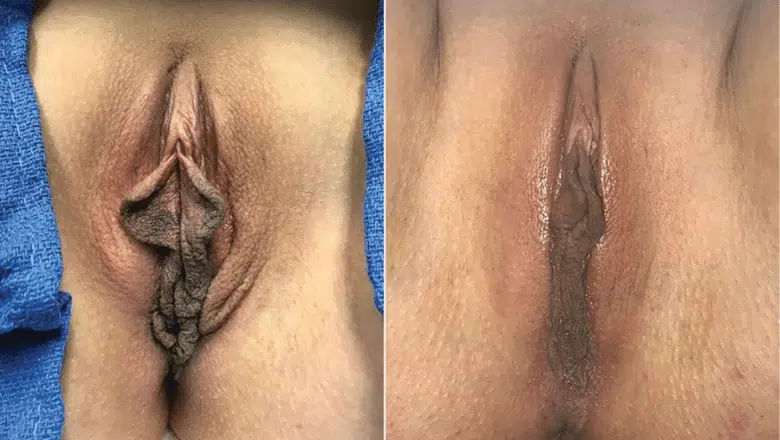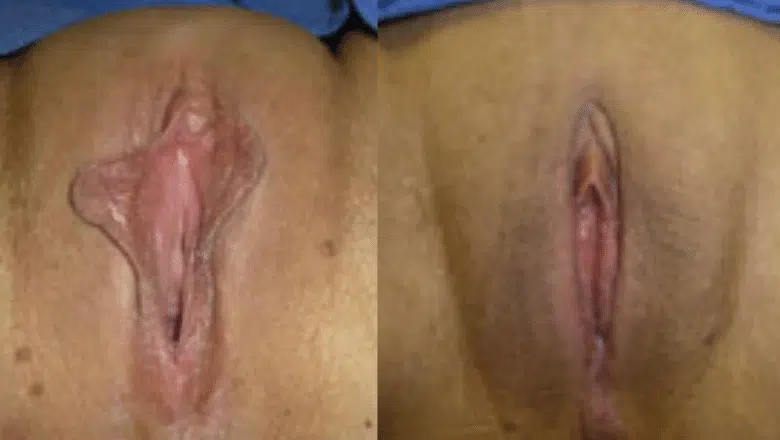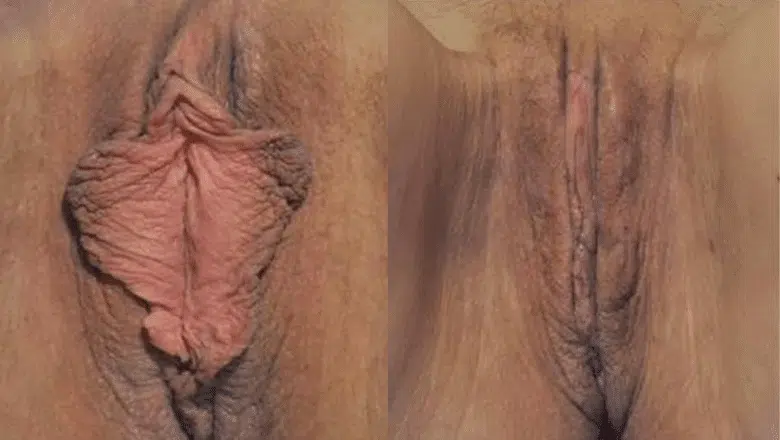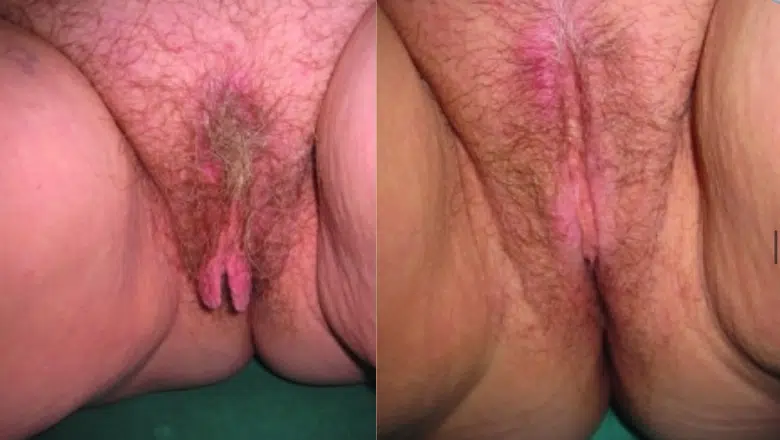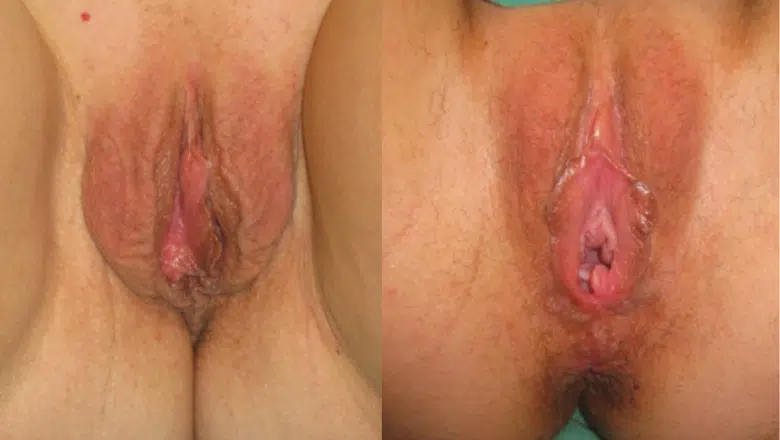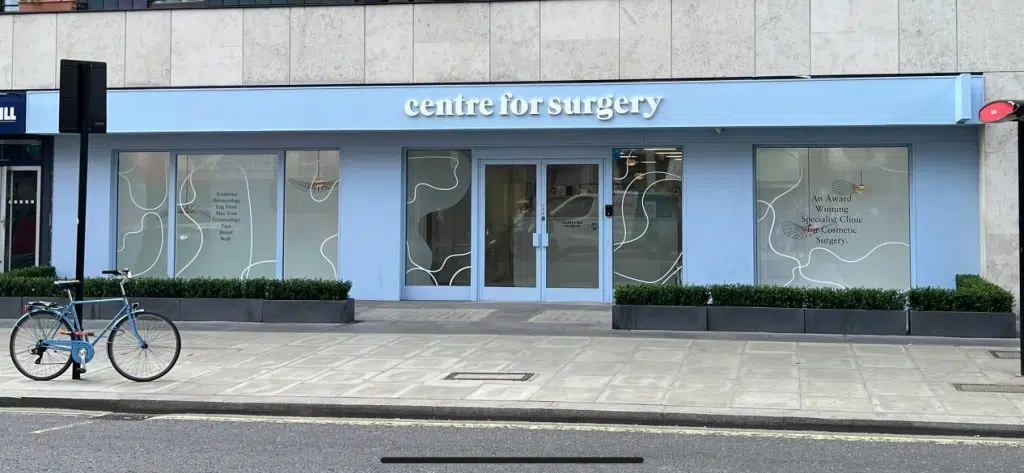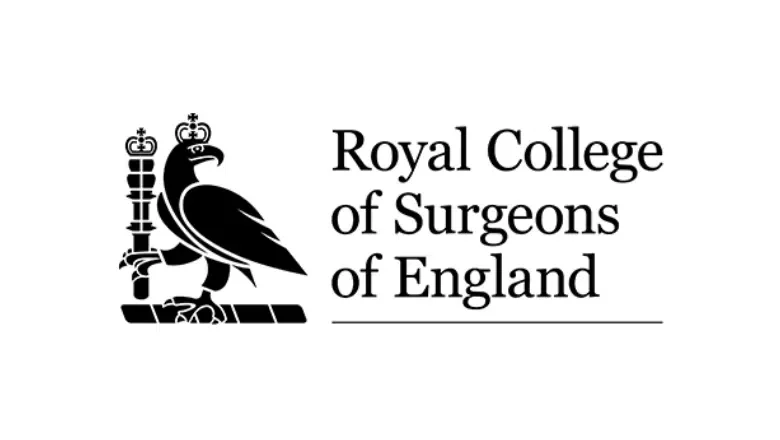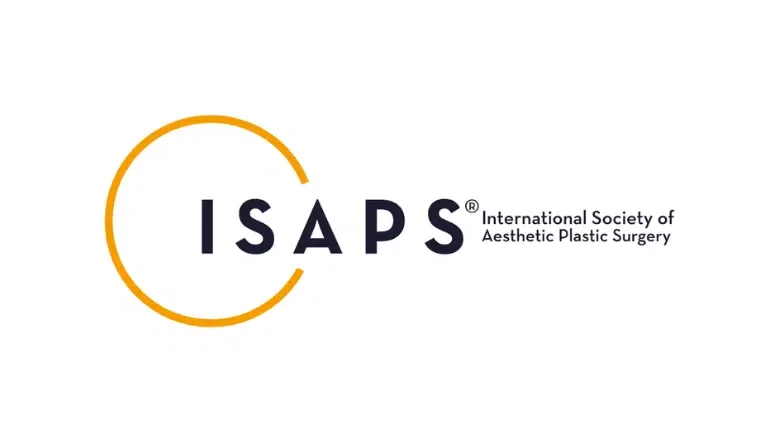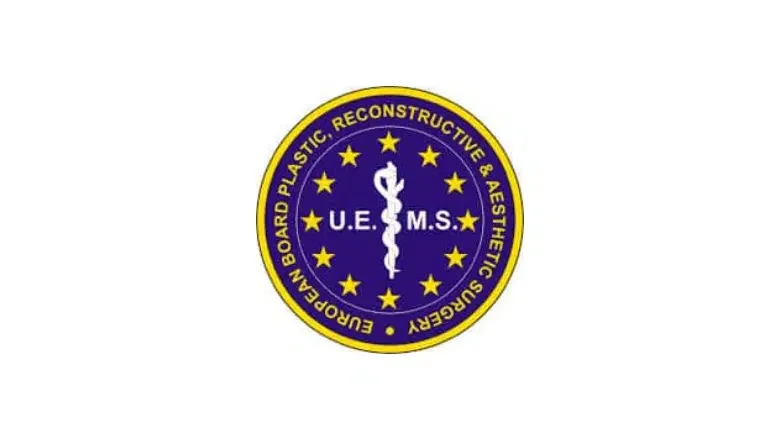What is labiaplasty revision & reconstruction?
Labiaplasty is a surgical procedure that can produce life-changing results for women with large or asymmetrical labia. Labia reduction is designed to reduce or reshape the labia minora to improve their appearance and optimise function. Some women may experience pain and discomfort during sexual intercourse. Women who have labia surgery often develop a significant boost in self-confidence and emotional well-being.
RELATED: Labiaplasty FAQs – Q&As about Labia Reduction
The decision to have labiaplasty surgery is a significant one for many women. Women will often have to research the procedure in detail to find the best surgeon and clinic to carry out the procedure. Unfortunately, the outcome of labiaplasty surgery may not meet a woman’s expectations. We regularly see women who have had botched labiaplasty surgery performed elsewhere, whether in the UK or overseas, including in Turkey. All surgical procedures, including labia reduction, involve certain risks. Labial tissue has complex anatomy; each patient will respond differently to surgery and postoperative recovery depending on the extent of surgical correction required. Even the best-performed labia surgery may produce an undesirable labiaplasty result.
RELATED: How to choose the best labiaplasty surgeon
For patients who are deeply unhappy with the results of the labiaplasty procedure performed elsewhere, We may be able to help. Centre for Surgery is home to recognised experts in revision labiaplasty in London and can help to address any concerns you may have from previous surgery. Having a consultation will allow the surgeon to make a clinical decision as to whether they can achieve what you are looking for.
RELATED: What is a revision labiaplasty?
What are the benefits of labiaplasty revision?
Labiaplasty revision and reconstruction are distinct surgical procedures that are designed to target specific concerns from previous labiaplasty surgery. The nature of revision labiaplasty surgery will differ between people as each procedure is customised to the structural concern needing correction. Most types of revision labiaplasty are designed to target undesirable labiaplasty results that develop from a poor surgical technique or a disrupted healing process during the recovery period.
Most types of labiaplasty concerns are considered minor in nature, although a labiaplasty reconstruction procedure may be required to address complex defects from previously botched labiaplasty surgery.
Labiaplasty revision is a different procedure from reconstructive surgery. Both types of corrective surgery are designed to improve the overall results of previous labiaplasty surgery, although the surgical techniques used for each procedure may differ significantly.
Labiaplasty revision surgery addresses minor imperfections from previous surgery that may otherwise have produced satisfactory results. Typical examples include slight asymmetry between the labia minora, uneven labial edges or excessive scarring. Revision surgery can also remove polyps or any other minor soft tissue defects that may develop after a primary labiaplasty.
Most types of revision labiaplasty are quite straightforward to perform. Any surgical adjustments can be carried out easily as an outpatient under a local anaesthetic procedure. It is important to remember that every person is different, and the nature of the presenting problem will determine the appropriate corrective surgery.
Labiaplasty reconstruction is a major surgery which requires extensive preoperative planning. This procedure is often better thought of as a redo procedure to address significant unhappiness from a botched labiaplasty. Labiaplasty reconstructive surgery is designed to correct major problems from previous surgery, including the over-resection of labia tissue and address new problems that have developed due to the first procedure. Reconstructive surgery can take over 3 to 4 hours to perform and may involve significant surgical correction. Fewer people are suitable for reconstructive surgery as only up to 50% of patients will have problems that are amenable to surgical correction.
Am I suitable for a revision labiaplasty?
The best place to determine suitability for labiaplasty reconstruction or revision is to have a face-to-face consultation at our Baker Street clinic. Patients who may be suitable for either revision or reconstructive labiaplasty include:
- Have had a previous labiaplasty procedure.
- Are dissatisfied with the results of the first procedure.
- Are medically fit to have revision surgery.
- Have waited a minimum of six months to undergo revision surgery.
Your surgeon will also consider other factors, including your expectations for treatment and whether these are considered realistic. A physical examination will help to assess whether labiaplasty revision or reconstructive surgery is feasible. This will depend on the extent of the problem from the first labiaplasty procedure. A full labiaplasty reconstruction is only suitable in up to half of all cases assessed.
Most types of labiaplasty surgery generally involve removing and reshaping labial tissue. Suppose the extent of surgical deformities from excessive tissue removal is considered too great. In that case, the risks of labiaplasty reconstruction may be high enough to advise against it as a viable treatment option.
The best candidates for revision labiaplasty are those who have mild to moderate surgical defects and have realistic expectations of what the procedure can achieve. Aiming for a perfect result is not considered realistic, and your surgeon will explain the risks and complications of labiaplasty revision in detail at your consultation.
What are the most common reasons to have labiaplasty revision?
Your surgeon can use several different surgical techniques during either revision or reconstructive surgery, and the extent of the postoperative surgical deformity will determine the most appropriate technique chosen. Each revision labiaplasty procedure is carefully customised to the needs of each patient. In our experience, four common problems often require a labiaplasty revision and reconstruction.
Excessive tissue removal
This is due to poor surgical technique by a surgeon who has limited experience with carrying out labiaplasty. An inexperienced surgeon will often tug on the delicate labial tissue as the tissue is surgically removed with the trim technique or edge excision method. This fails to take into account the highly elastic nature of the labia. Excessive tissue removal often becomes apparent during the healing phase as the tissue returns to its normal size and shape. A labiaplasty reconstruction will be required to produce satisfactory results. Potential approaches to labiaplasty reconstruction depend on how much labial tissue remains. A specialist labiaplasty surgeon can use residual labial tissue located close to the clitoral hood to create an appropriately sized labia minora.
Please be aware that corrective surgery is not always possible for this type of labia deformity.
Insufficient tissue removed
This is a straightforward problem to correct with a revision labiaplasty. This common problem occurs when the original surgeon removes less tissue than desired by the patient due to a lack of understanding of the patient’s treatment goals. An inexperienced surgeon may also tentatively remove the appropriate amount of labial tissue. Corrective surgery is generally straightforward as it involves removing smaller amounts of extra tissue using either a trim or wedge technique.
RELATED: Trim Labiaplasty vs Wedge Labiaplasty
Separated wound edges
Wound edge separation often develops due to a localised haematoma beneath the skin due to a flawed surgical technique carried out by an inexperienced surgeon. The edges of the tissue which has been removed as part of a wedge labiaplasty often fail to heal correctly, which may result in the appearance of uneven edges, prominent scarring or the formation of ‘dog ears’, which is used to describe bunched up tissue towards one end of the incision. This problem often requires a reconstructive labiaplasty to revise the results of a previous botched wedge labiaplasty completely.
Excessive scarring
Failing to stitch the edges of the incision together with meticulous technique can result in the formation of excessive scarring. Some parts of the incision may have lumpy areas, while other women may notice obvious holes where stitches were previously holding the edges of the incision together.
This is a relatively straightforward problem to correct with revision surgery provided adequate labial tissue is used in the procedure. Patients should wait at least three months before having revision surgery as the healing wound will contain delicate and friable tissue that is prone to repeat would breakdown.
Why choose Centre for Surgery for labiaplasty revision?
Centre for Surgery is the leading cosmetic surgery clinic, and our cosmetic gynaecologists have many years of experience helping women in London and the surrounding areas. If you have been considering corrective surgery as part of a labiaplasty revision or reconstructive surgery, please call us on 020 7993 4849 or complete the contact form below. Our surgeons are experts in all the recognised labiaplasty techniques. They will devise a detailed preoperative plan to give the best possible chance of success after revision or reconstructive labiaplasty surgery. We commonly see women who have had botched labiaplasty surgery carried out overseas, especially in Turkey. A promise of low prices lured many patients. Unfortunately, the standards of medical care, including the surgeon’s experience, are often inadequate.
Not everyone is suitable for a labiaplasty revision or reconstruction. This is why it is essential to choose a highly experienced surgeon practising at a well-established private clinic such as the Centre for Surgery in London.
FAQs
-
What causes a botched labiaplasty?A botched labiaplasty is a situation where a labiaplasty procedure has been performed incorrectly, resulting in an unsatisfactory outcome or even causing physical harm to the patient. Several factors can contribute to a botched labiaplasty, including:
Lack of experience or training: Labiaplasty is a specialised surgical procedure that requires a high level of skill and expertise. If the surgeon performing the procedure lacks the necessary experience or training, they may make mistakes that result in a botched outcome.
Poor planning: Proper planning and preparation are essential for any surgical procedure, including labiaplasty. A surgeon who fails to plan the procedure adequately or who does not take into account the patient's unique anatomy may make mistakes during the surgery that result in a botched outcome.
Over-aggressive trimming: One of the most common causes of a botched labiaplasty is an over-aggressive trimming of the labia minora. If too much tissue is removed, it can lead to discomfort, pain, scarring, and an asymmetrical appearance.
Inadequate or improper anaesthesia: Proper anaesthesia is essential for any surgical procedure to ensure patient comfort and safety. If the anaesthesia is inadequate or administered improperly, it can result in pain, anxiety, and other complications.
Poor wound care: After the labiaplasty procedure, proper wound care is essential for optimal healing and to prevent infection. If the patient does not receive adequate wound care instructions, or if they fail to follow them, it can lead to complications such as infection, scarring, and delayed healing.
Post-operative complications: Even with the best surgical technique and proper wound care, complications such as infection, bleeding, or poor healing can occur after a labiaplasty procedure. If not managed properly, these complications can lead to a botched outcome.
It is essential to choose a specialist surgeon with extensive experience in labiaplasty procedures to minimise the risk of a botched outcome. Patients should also carefully follow their surgeon's instructions before and after the procedure to ensure optimal healing and minimise the risk of complications. -
Can overly aggressive labial trimming be corrected?Overly aggressive labial trimming can sometimes be corrected with revision labiaplasty. Revision surgery can help to remove excess tissue and create a more natural and symmetrical appearance of the labia minora. The specific technique used for revision labiaplasty will depend on the extent of the previous surgery, the amount of tissue to be removed, and the patient's individual anatomy.
During revision surgery, the surgeon may use techniques such as labial flap reconstruction or fat grafting to restore tissue volume and contour. Labial flap reconstruction involves using the patient's own tissue to reconstruct the labia, while fat grafting involves injecting the patient's own fat into the labia to restore volume and improve symmetry.
However, it is important to note that revision surgery can be challenging, and the results may not always be perfect. The patient should also understand that revision surgery carries its own risks and complications, such as bleeding, infection, and scarring. -
Is revision labiaplasty technically challenging?Revision labiaplasty can be technically challenging, depending on the extent of the initial surgery, the severity of the problem, and the patient's individual anatomy. In general, revision surgery is considered more challenging than the primary procedure because it requires the surgeon to correct the existing issue while also accounting for the previous surgery's impact on the tissues.
Revision labiaplasty may be necessary to correct various issues, including asymmetry, over-resection, under-resection, scarring, and loss of sensation. The degree of complexity of the revision surgery will depend on the extent of the previous surgery and the amount of tissue that needs to be corrected.
Some of the challenges that may arise during revision labiaplasty include:
Scar tissue: Scar tissue from the previous surgery can make it more difficult to access and work on the tissues, as well as increase the risk of bleeding.
Tissue loss: The previous surgery may have removed too much tissue, making it difficult to reconstruct the labia without adding more tissue.
Tissue damage: The previous surgery may have damaged the nerves, blood vessels, or other structures, making it difficult to reconstruct the labia without causing further damage.
Limited tissue availability: Revision surgery may be challenging if there is limited tissue available for reconstruction, such as in cases where the previous surgery has removed a significant amount of tissue.
Patient dissatisfaction: Patients who are unhappy with the results of their initial surgery may have high expectations for the revision surgery, which can be challenging for the surgeon to meet. -
Why is revision labiaplasty not always possible?Revision labiaplasty may not always be possible due to several reasons, including:
Limited tissue availability: In some cases, the initial labiaplasty may have removed too much tissue, making it difficult or impossible to reconstruct the labia without adding more tissue. However, adding more tissue can lead to other complications and may not be possible depending on the patient's individual anatomy.
Scar tissue: Scar tissue from the initial surgery can make it challenging to access and work on the tissues, and it may not be possible to remove all the scar tissue during the revision procedure.
Nerve damage: The initial labiaplasty can damage the nerves in the area, which can cause permanent loss of sensation or pain. If the nerves are severely damaged, it may not be possible to restore sensation even with revision surgery.
Medical conditions: Certain medical conditions, such as bleeding disorders, may make revision labiaplasty unsafe or impossible.
Patient's anatomy: In some cases, the patient's individual anatomy may make revision labiaplasty challenging or impossible. For example, if the labia are naturally asymmetrical, it may be difficult to correct the asymmetry without causing other issues.
Patient's expectations: Revision labiaplasty may not be possible if the patient's expectations are unrealistic or if they have unrealistic goals for the procedure.




